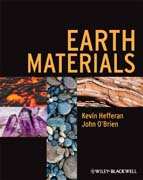
Particularly since the 1980s, Earth science at the undergraduate level has experienced fundamental changes with respect to curricula and student goals. Many traditional geology and Earth science programs are being revamped in response to evolving employment and research opportunities for Earth science graduates. As a result, many colleges and universities have compressed separate mineralogy, optical mineralogy, petrology and sedimentology courses into a one- or two-semester Earth materials course or sequence. This in part reflects the increasing demand on departments to serve students in environmental sciences, remote imaging and geographical information systems and science education. This change has occurred at an accelerating pace over the last decade as departments have adjusted their course offerings to the new realities of the job market. No book currently on the market is truly suitable for a one- or two-semester Earth materials course. Currently available texts are restricted to specific topics in mineralogy, sedimentology or petrology; too detailed because they are intended for use in traditional mineralogy, sedimentology or petrology course sequences; or not appropriately balanced in their coverage of the major topic areas. This book is intended to provide balanced coverage of all the major Earth materials subject areas and is appropriate for either a one-semester or two-semester mineralogy/ petrology or Earth materials course. The chapters that follow illuminate the key topics involving Earth materials, including: Their properties, origin and classification. Their associations and relationships in the context of Earths major tectonic, petrological, hydrological and biogeochemical systems. Their uses as resources and their fundamental role in our lives and the global economy. Their relation to natural and human-induced hazards. Their impact on health and on the environment. This Earth Materials text provides: A comprehensive descriptive analysis of Earth materials. Graphics and text in a logical and integrated format. Both field examples and regional relationships with graphics that illustrate the concepts discussed. Examples of how theconcepts discussed can be used to answer significant questions and solve real-world problems. Up-to-date references from current scientific journals and review articles related to new developments in Earth materials research. A summative discussion of how an Earth materials course impacts both science and nonscience curricula.
- ISBN: 978-1-4443-3460-9
- Editorial: Wiley-Blackwell
- Encuadernacion: Rústica
- Páginas: 808
- Fecha Publicación: 23/04/2010
- Nº Volúmenes: 1
- Idioma: Inglés
